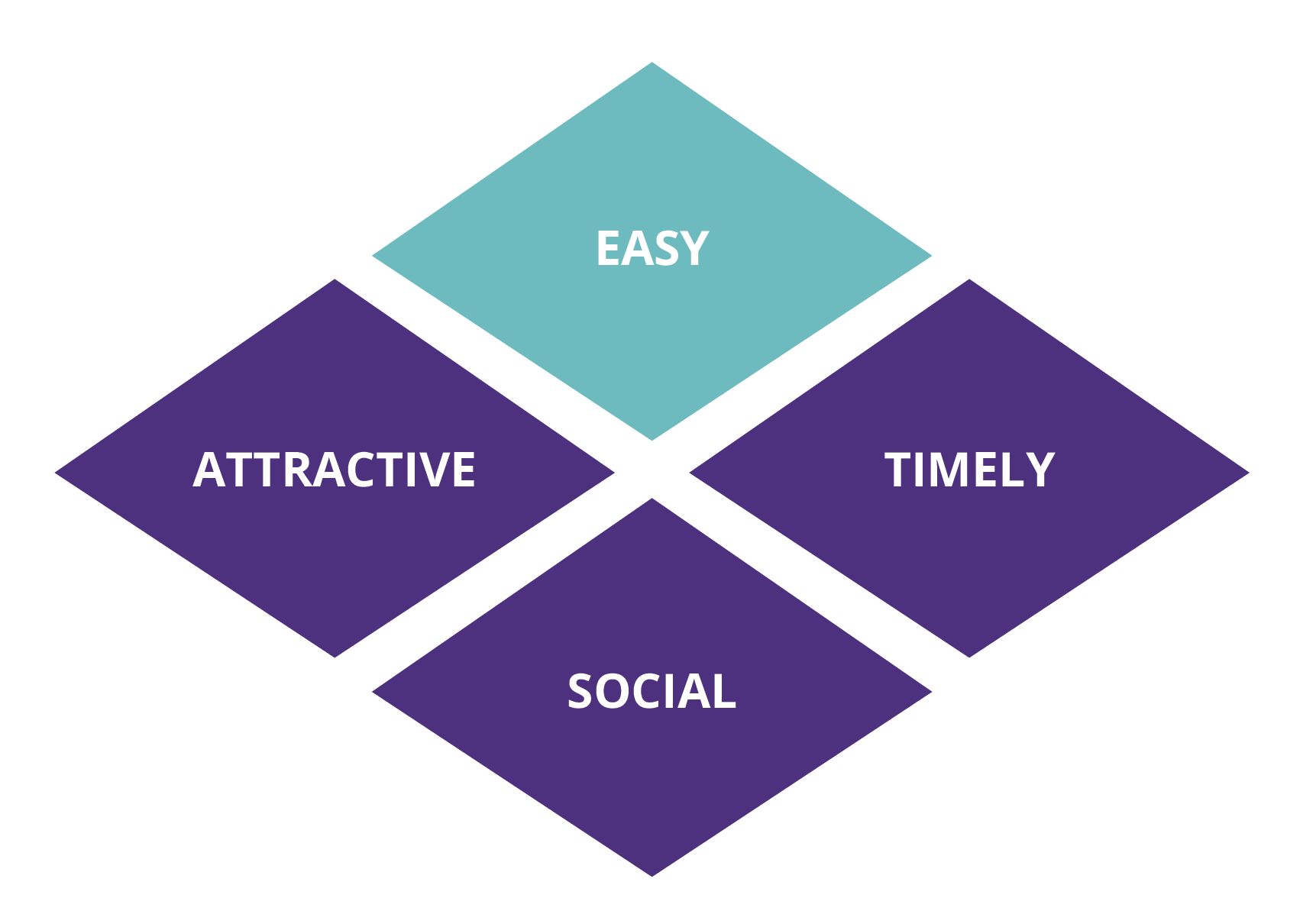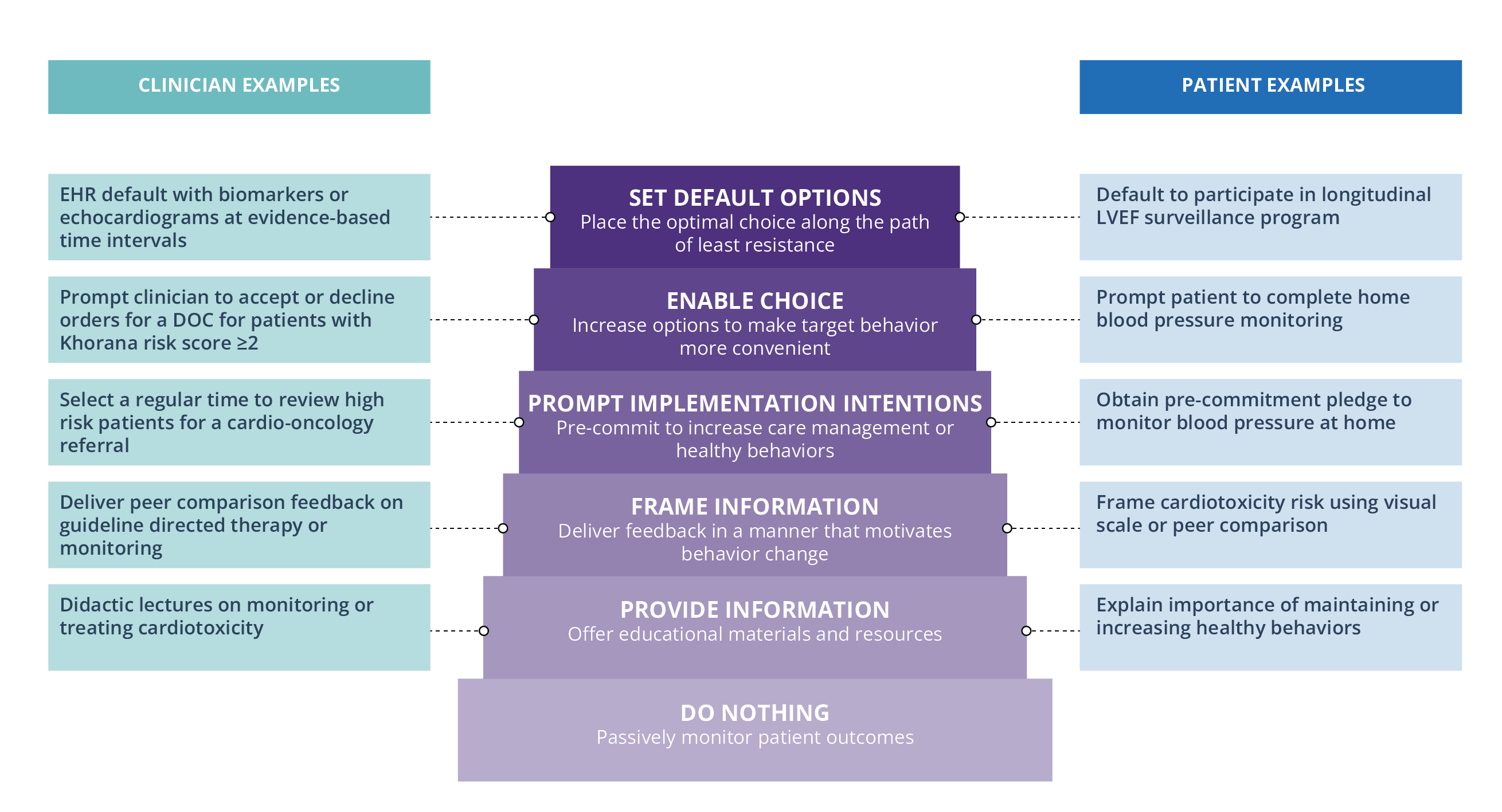Which Problems Qualify as "Nudgeable"?
Nudges in health care should target areas where care teams or patients don't make the choice that best supports health outcomes or where they fail to act altogether. A good candidate for nudging has many of the following characteristics:
☐ a measurable gap between where things are and where they should be
☐ an established best practice
☐ an environment where the best choice is unclear
☐ an environment that makes it difficult to make the best choice
☐ an opportunity to boost motivation among care teams or patients
☐ no prompt to trigger or retrigger a desired action
☐ buy-in from key decision-makers to enact change
Problems need more than a nudge when there is no established best practice to "push" users towards, there is no buy-in from key decision-makers to enact change, or extensive structural redesign is required to achieve outcomes.
When are Nudges Most Effective?

Nudges are most effective when they consider the Fogg Behavior Model and follow the EAST Framework.
The Fogg Behavior Model posits that three elements must converge at the same moment for a behavior to occur: motivation (the person wants to change), ability (the process for changing is feasible), and a prompt (there is an environmental cue).
The EAST Framework, developed by the UK's Behavioural Insights Team, states that if you want to encourage a behavior, you must make it easy, attractive, social, and timely (EAST).
The “Nudge Ladder” below demonstrates the variation in impact of specific types of nudges. As you move up the ladder from “Do Nothing,” you can have an increasing impact on clinician and patient behavior, but additional up-front resources will be required.

We plan to add to and iterate on this content regularly. As such, we invite you to share feedback on your experience and suggestions for updates.